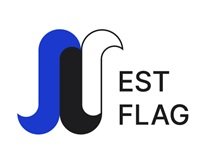Estonia's Digital-First Ship Registry: A Modern Maritime Flag

When considering where to register commercial vessels, shipowners have a broad range of options, each with its own advantages. Among European flags, Estonia has emerged as a compelling choice thanks to its cutting-edge digital infrastructure, favorable fiscal policies, and streamlined administrative processes.
A Maritime Nation Embracing Digital Transformation
Estonia's seafaring traditions stretch back centuries, but its approach to ship registration reflects modern priorities. Following legislative reforms implemented in 2020, Estonian authorities restructured their maritime registry framework to enhance its competitiveness. This modernization effort consolidated all registry functions under a unified brand - EST Flag - representing the country's commitment to transparent, efficient vessel documentation.
The reforms introduced financial support mechanisms specifically designed for shipowners, including tonnage-based taxation and crewmember incentive structures. These changes positioned Estonia as a jurisdiction where innovation meets tradition, offering shipowners both historical maritime expertise and forward-thinking regulatory frameworks.
Accessibility Without Borders
Registration eligibility extends to both domestic and international stakeholders, whether individuals or corporate entities. The main requirement is to maintain a permanent presence within the Estonian jurisdiction, a straightforward and proportionate condition that imposes only few barriers to entry. Foreign registrants find particular value in the e-Residency program, which grants digital access to governmental platforms and business services without physical presence requirements.
Estonia's reputation as a pioneer in comprehensive digital governance isn't just rhetoric - it reflects a 100% online workflow, accessible around the clock. The vessel registration process leverages Estonia's world-class administrative IT systems, allowing applicants to submit documentation electronically through secure government portals. Vessel ownership verification, compliance certificates, and supporting materials all flow through digital channels, authenticated via electronic signatures. This paperless approach eliminates geographic constraints, enabling shipowners to complete registration from any location with internet connectivity.
Maritime operators benefit from two specialized platforms. The Ship Information System enables vessel representatives to handle registration, request inspections, manage certification, and oversee entire fleets remotely. Automated notifications ensure timely attention to renewal deadlines and financial obligations. The complementary Seafarers' Information System allows crew members to obtain, extend, and share professional credentials without visiting physical offices, maintaining secure digital records accessible from shore or sea.
The combination of digital-first operations and forward-looking policy makes Estonia attractive to innovation-focused enterprises seeking dependable, long-term registry partnerships within a European framework. Whether managing small fleets or extensive shipping groups, owners benefit from fast registration timelines and straightforward procedures.
 Fiscal Framework Designed for Maritime Commerce
Fiscal Framework Designed for Maritime Commerce
Estonia's tax structure consistently ranks among the most competitive in the OECD, earning recognition in international evaluations of fiscal policy. For shipping enterprises, this advantageous environment is further improved by sector-specific aid programs.
The tonnage taxation model calculates tax liability based on vessel capacity rather than operational profits, creating predictable cost structures that facilitate long-term financial planning. Simultaneously, the seafarer program substantially reduces employment costs by applying zero income tax to crew members, augmented by a small monthly social tax. These combined measures generate meaningful operational savings while maintaining full compliance with European Union standards.
A separate support scheme addresses passenger vessel operations, demonstrating the registry's flexibility across different maritime segments. Together, these frameworks create an ecosystem where shipping companies can optimize their tax position within a transparent, legally sound structure.
Incentivizing Fleet Modernization
Estonia's flag registry has a range of incentives to attract newly-built vessels. The tonnage scheme incorporates age-based calculations that favor newer ships through progressively lower tax rates. A ship under ten years old enjoys substantially reduced tax obligations compared to twenty-year-old tonnage of equivalent size, acknowledging the higher capital investment required for modern newbuilds.
Registration procedures further accommodate newer vessels through documentation-based review processes that often eliminate on-site inspection requirements. Modern ships meeting current technical standards and regulatory expectations typically qualify for expedited registration based on paper verification alone.
Strategic Vision for Registry Evolution
Ongoing regulatory refinement aims to enhance competitiveness and business-friendliness further. Priorities include streamlining registration workflows, modernizing operational systems, and expanding digital tool capabilities across vessel and seafarer platforms. In the future, Estonia also plans to connect tax incentives not only to vessel age but to environmental performance, reducing costs for low-emissions vessels.
The register's long-term objectives include extending state aid eligibility to additional vessel categories and tailoring services more precisely to evolving shipowner requirements. These initiatives reflect Estonia's overarching ambition: establishing international recognition as an efficient, reliable maritime jurisdiction supporting sustainable industry growth through practical innovation and responsive governance.
This article is sponsored by EST Flag. Follow EST Flag on LinkedIn at https://www.linkedin.com/showcase/est-flag.
The opinions expressed herein are the author's and not necessarily those of The Maritime Executive.
